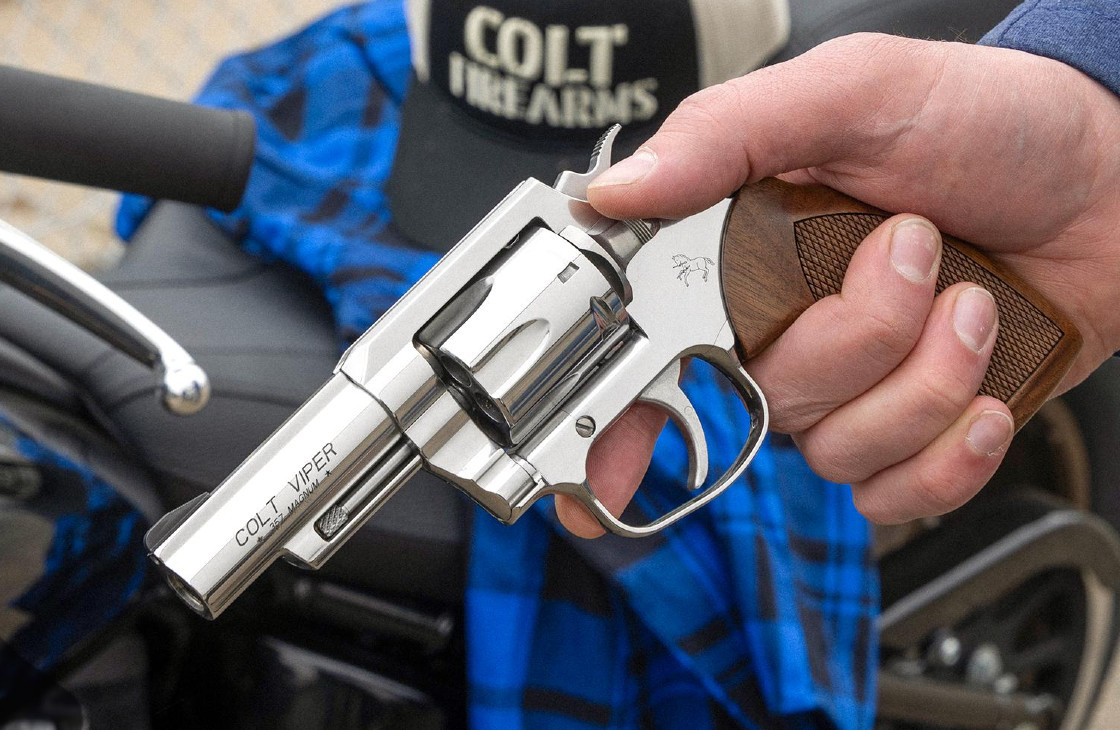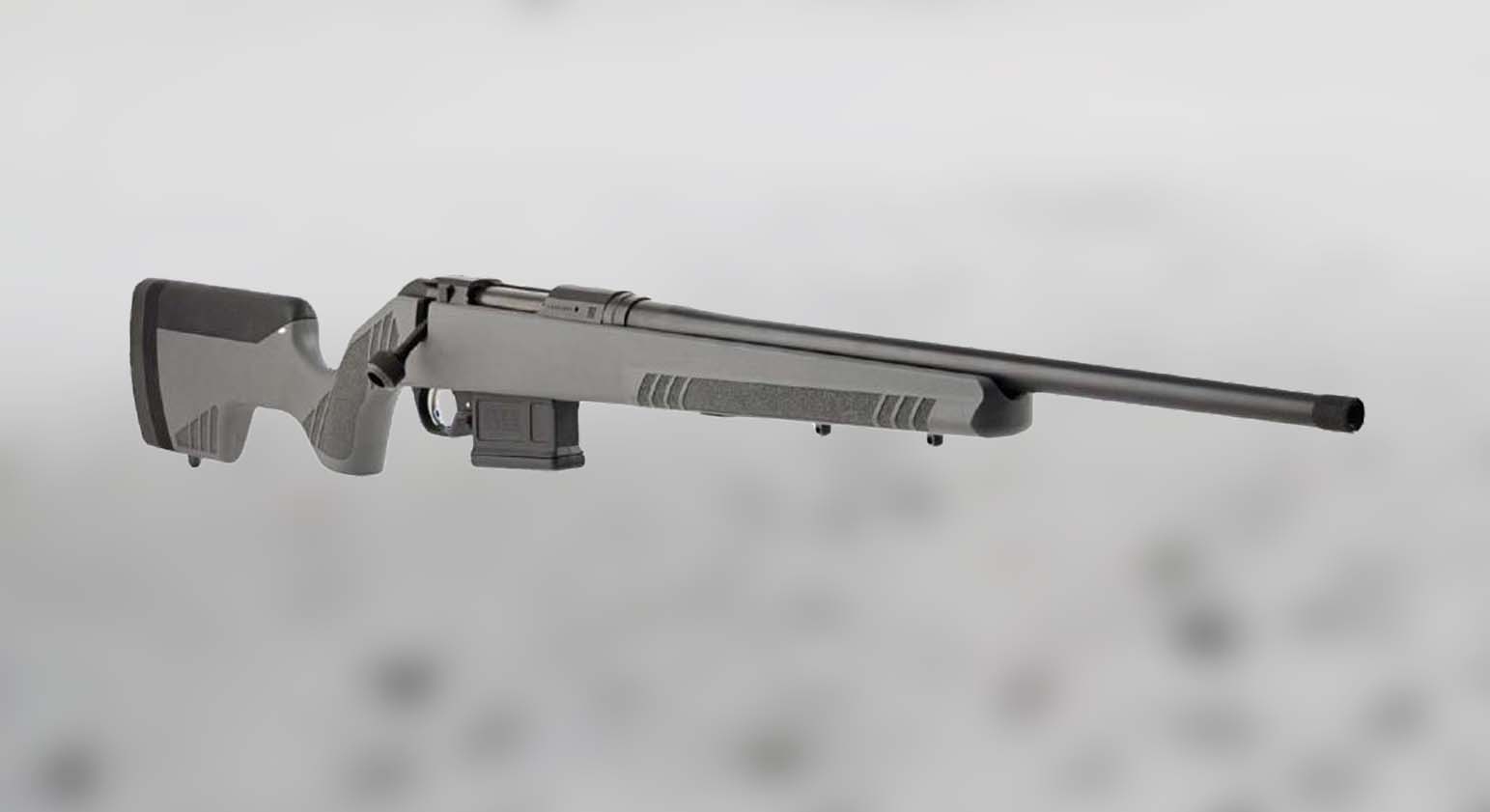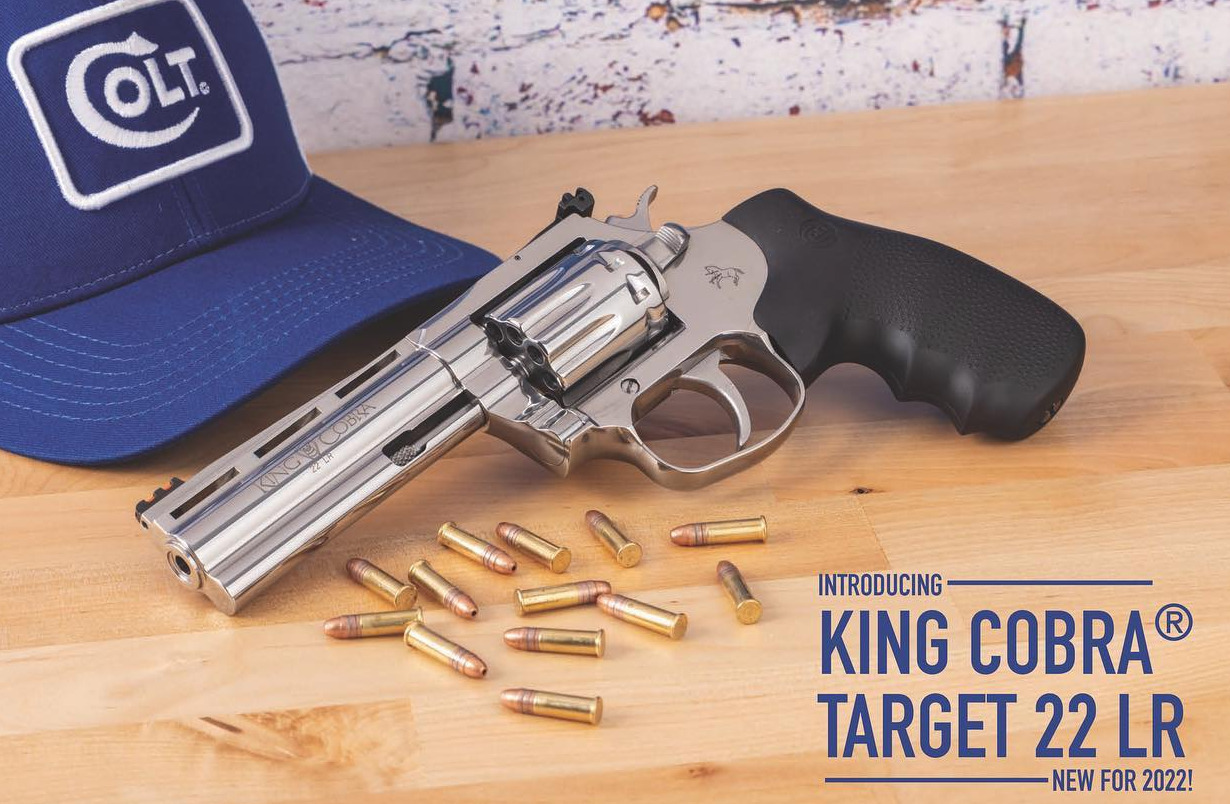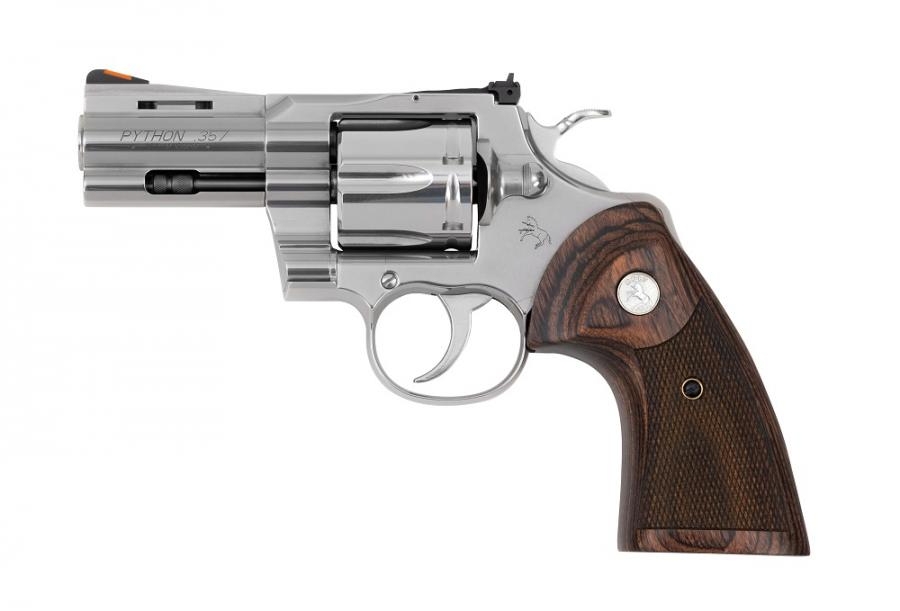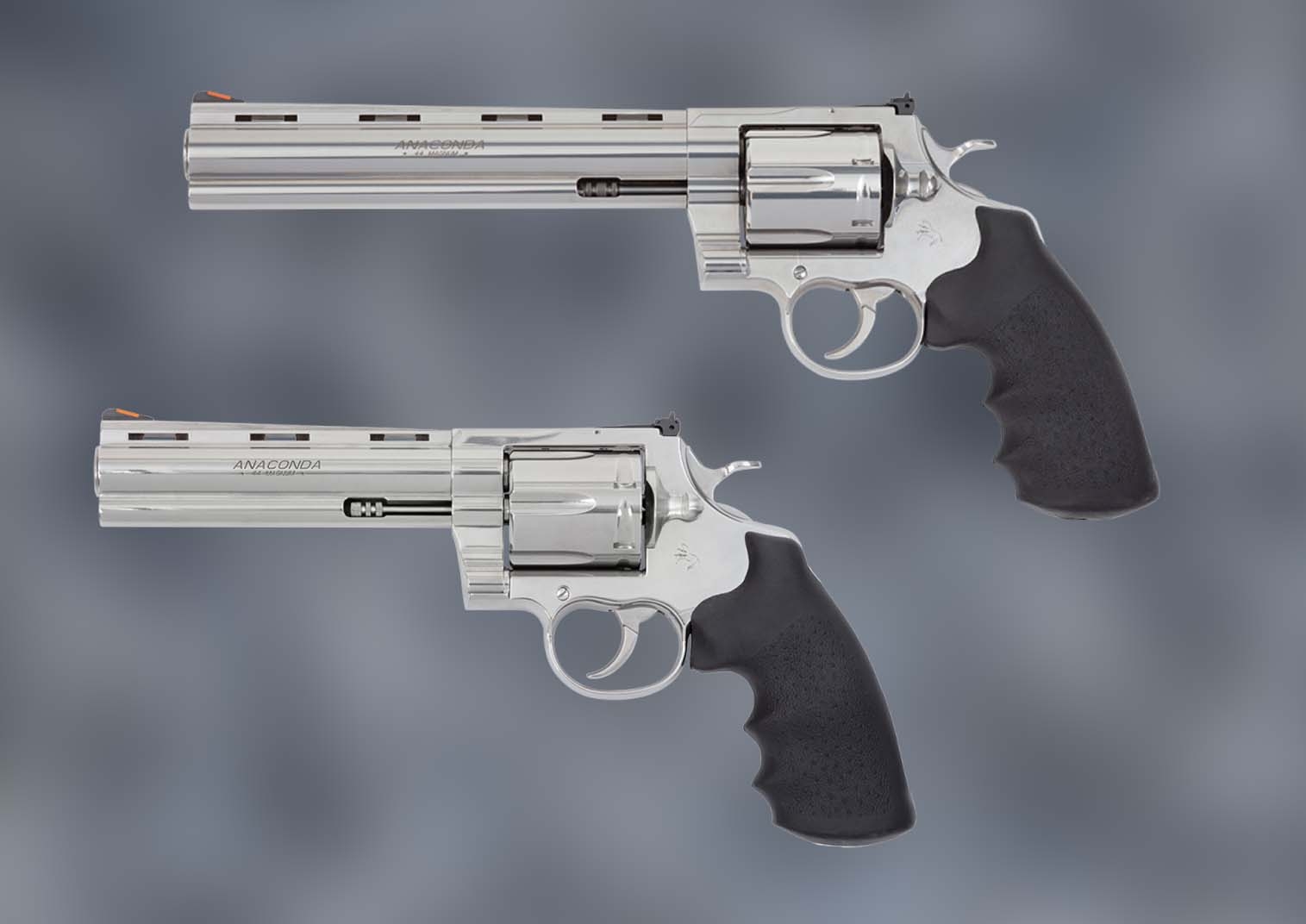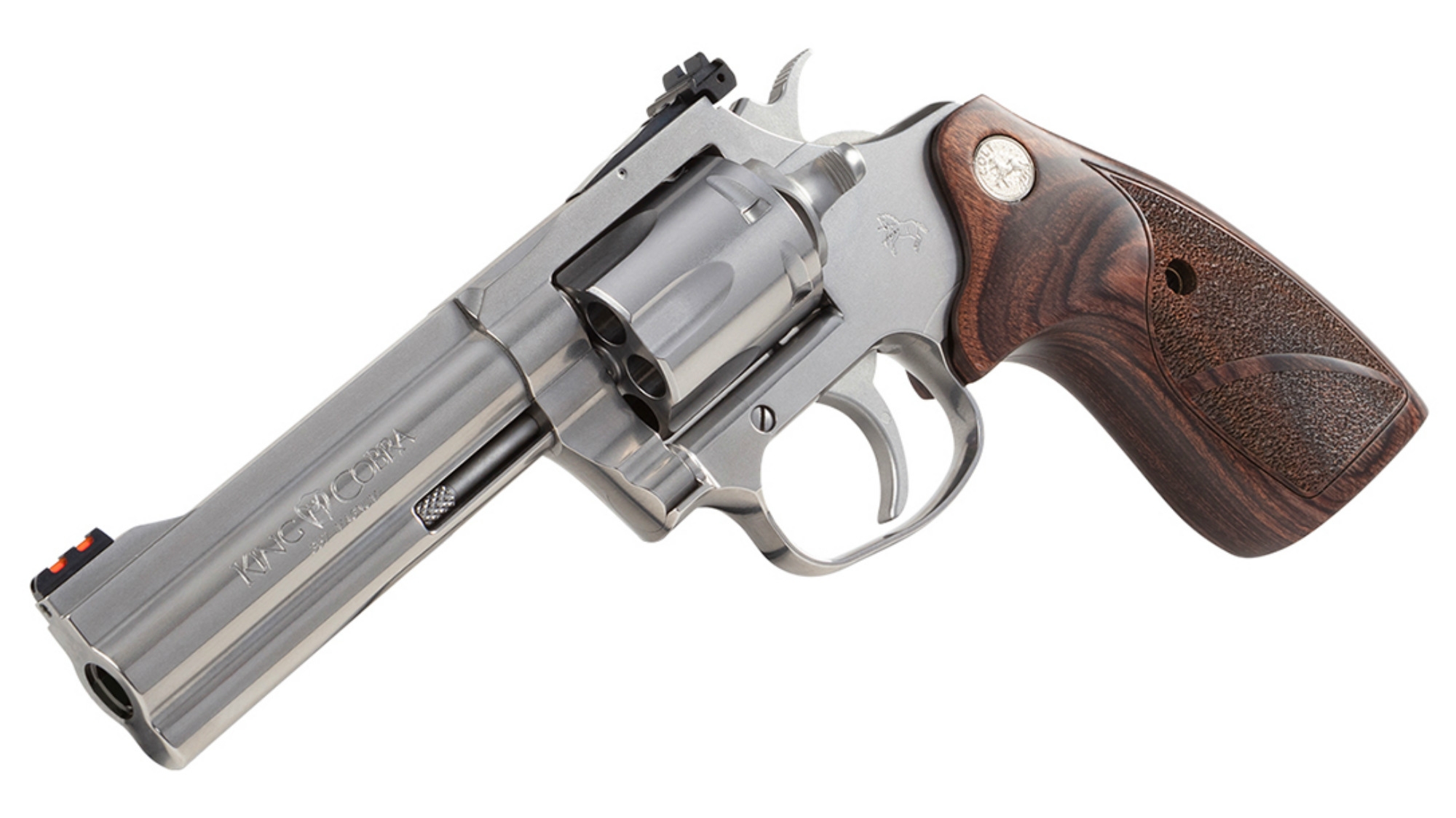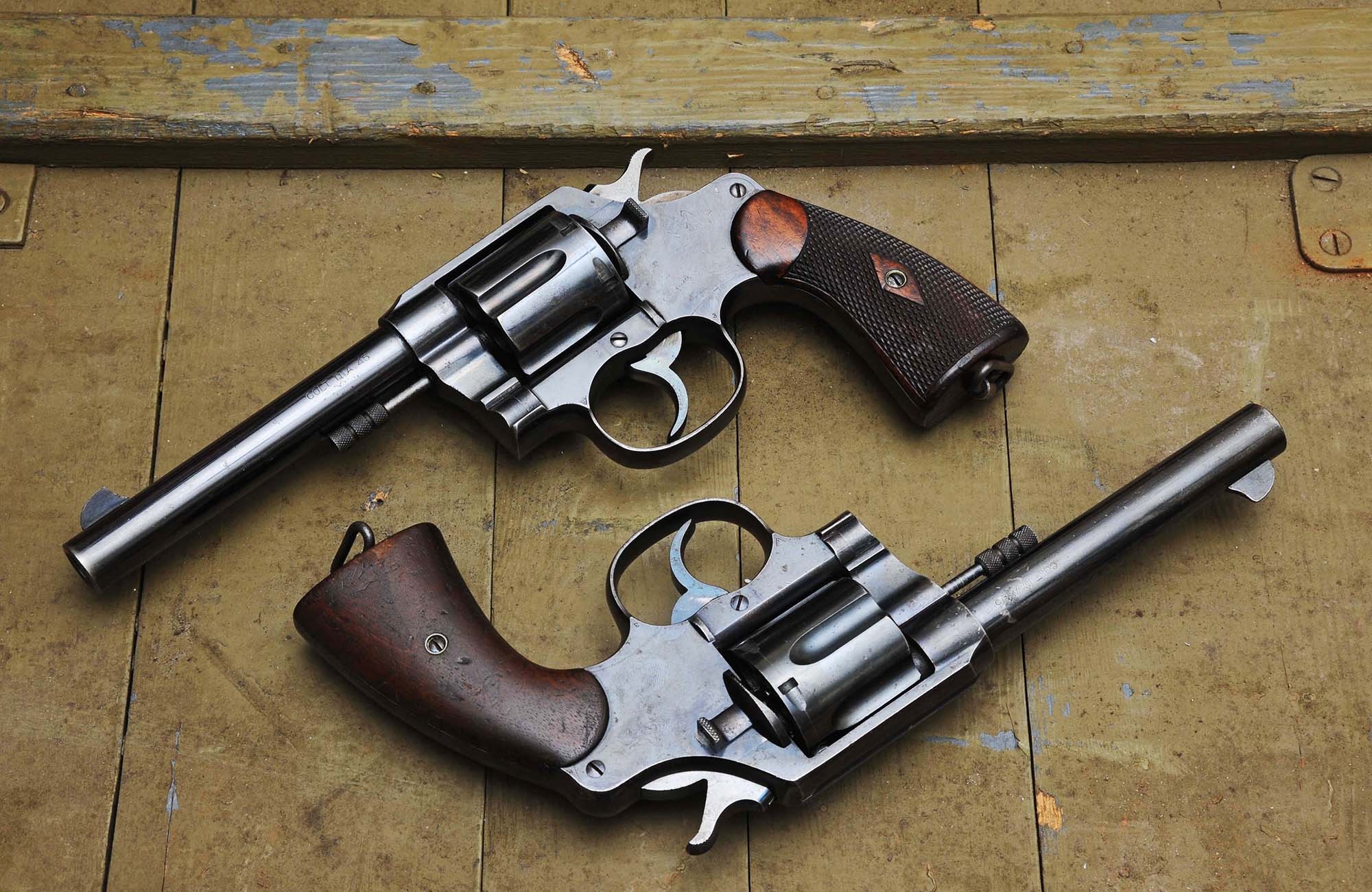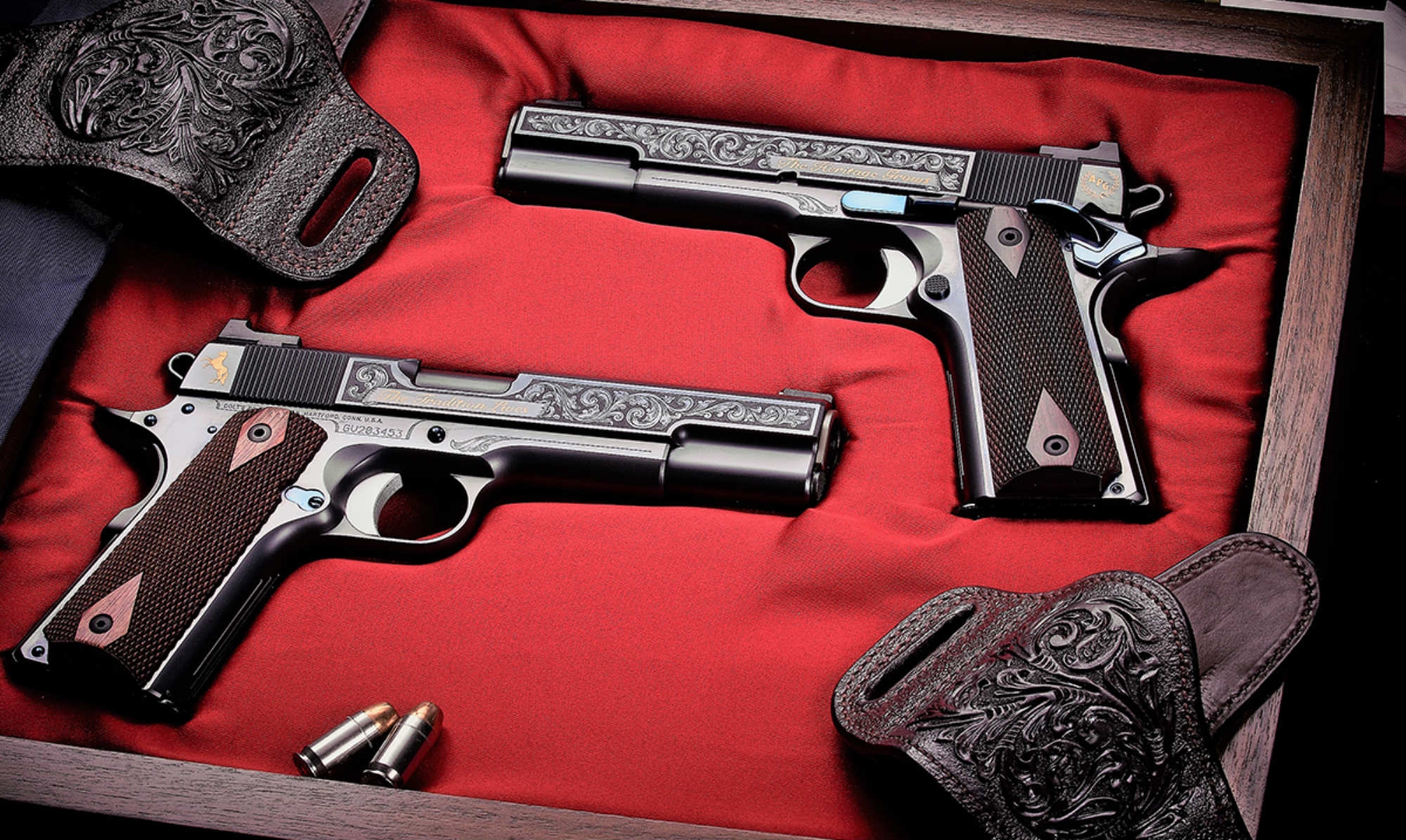It must be stressed that between 2003 and 2009 Colt produced two replicas of the "Model of 1911" in .45 ACP, albeit the difference is only in the finish: a first production of only 3-4,000 pieces with a special finish called "Carbonia Blue" - evocative of the deep bluing seen on the civilian market Colts and the initial military lots - and then a second run called by Colt “1918 Model” characterized by a "Black Oxide" finish like the one used for later war guns (around 1918) when production processes were simplified. The gun tested here belongs to this second production run.
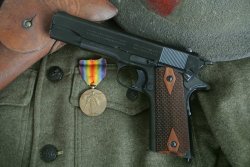
The presentation of the weapon underlines the "limited" nature of this production: a beautiful rectangular box made of blue cardboard with the golden Colt logo. Inside the box there are two compartments, for the accessories and the gun. The latter is contained in a cardboard box reproducing the military packaging used to ship military Colt 1911s from the factory. Two seven-round magazine are supplied: it's a shame that they are fully blued and not “two-tone” like the original ones. The accessories include a cable lock, the usual orange plastic chamber safety flag, and a L shaped tool, a nice replica of the original takedown tool. Finally, there's a reproduction of the user's manual of 1912 (revised edition of 1914).
Differences between the WW1 Colt 1911 and the 1911A1 version
Under the “Belle Epoque” dress, the mechanics are basically those of a 70 Series Colt - that is, no firing pin safety - with a handful of 80 Series elements (e.g. the extractor). This, however, in no way detracts from Colt's remarkable reverse engineering effort to reproduce as closely as possible the characteristics of the original 1911.
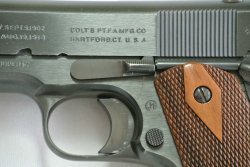
Just to summarize the external differences between an original WW1 Colt 1911 and the 1911A1 version introduced in 1924: a WW1 1911 has a longer trigger, no cutouts in the frame behind the trigger, a straight and smooth mainspring housing, a shorter grip safety spur, a tapered blade front sight, a longer hammer spur, and grips checkering with "Double Diamond" reliefs. All these details can be found in this replica, that also sports a profusion of authentic-looking markings such as the reproduced approval stamp of Major John M. Gilbert, Army Inspector of Ordnance from August 10th 1917 through March 29th 1918.
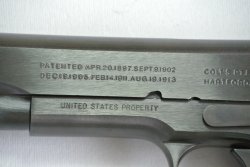
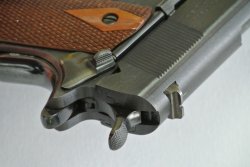
The crisp "UNITED STATES PROPERTY" indication on the left side of the frame and the old style Colt roll mark in the back of the slide really warm the hearts of collectors. The lanyard loop is a nice touch, too.
Moreover, the barrel has the correct feed ramp profile, very similar to the profile you can find in original military pistols. Another nicety is the slide stop window in the frame, which is not fully cut like in modern 1911. You have to strip down the gun to notice it, but it's there.
Slide and frame are very well fitted with no play whatsoever even when shaking the gun, which is always a good news. Material is all steel here - no aluminum, plastic or polymer anywhere – and barrel length is the traditional 5”, of course.
Colt 1911 WW1 replica: an Old Lady at the shooting range
Two types of commercial ammo, a 230-grain and a 226-grain, both jacketed round-nose, were used for the shooting test. In fact, we wanted to be consistent with the ammo used by the military.
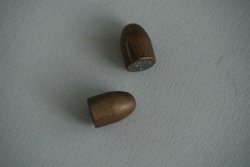
The tested gun showed a tendency to shoot low, about 5 inches below the point of aim at 25 yards. The blame must be put on the fixed sights, in particular the front sight, which with its semi-circular shape and its glossy finish reflects the light almost in any condition. Anyway, with a bit of practice you can obtain very satisfactory results in terms of accuracy – after a couple of magazines, you really have to try you best to miss the black of the target.
Shooting this replica also made us realize why with the 1911A1 they decided to go with a longer grip safety spur: with a Model 1911, if you do not get a proper grip some annoying "hammer bites" on the web of your hand are almost unavoidable.
Conclusions
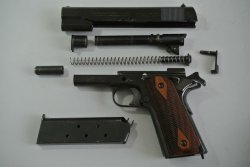
Unfortunately, the Colt 1911 WW1 replica was a limited run and it is no more in production. But if you find one for sale, why should you buy it? It is not a personal defense gun, if only because the lack of a firing pin safety can't be accepted nowadays. It is not even a target handgun: although we are certain that better shooters than us could obtain interesting results with it, a military Colt-Browning system gun, with its early 20th century teenie-weenie sights is not the best choice as a racegun.
So? Well, even if a replica, this is a collector's item in its own. It's the typical object you can appreciate for completely irrational reasons: the seduction of the good ol' days. And we think that's more than enough.
Colt WW1 1911 replica pistol: technical data
| Model: | 1911 WW1 “Model 1918”
replica |
| Caliber: | .45 ACP |
| Magazine capacity: | 7 rounds |
| Barrel length: | 5” (127 mm) |
| Sights: | Fixed, tapered blade
front, U-notch rear |
| Dimensions: | length 8.5” (215 mm),
height 5.5” (140 mm); width 1.25” (31 mm) |
| Weight: | 38 oz (1077 g) |
| Material: | slide, frame and
barrel – carbon steel |
| Finish: | “Black Oxide” blued |
| Note: | No more in production |
Click here to read about the Colt Cobra in .38 Special on all4shooters.com
Here you will find a comparison between the SIG Sauer Match Elite and an original Colt Government M 1911.
For more information, please visit Colt website.



